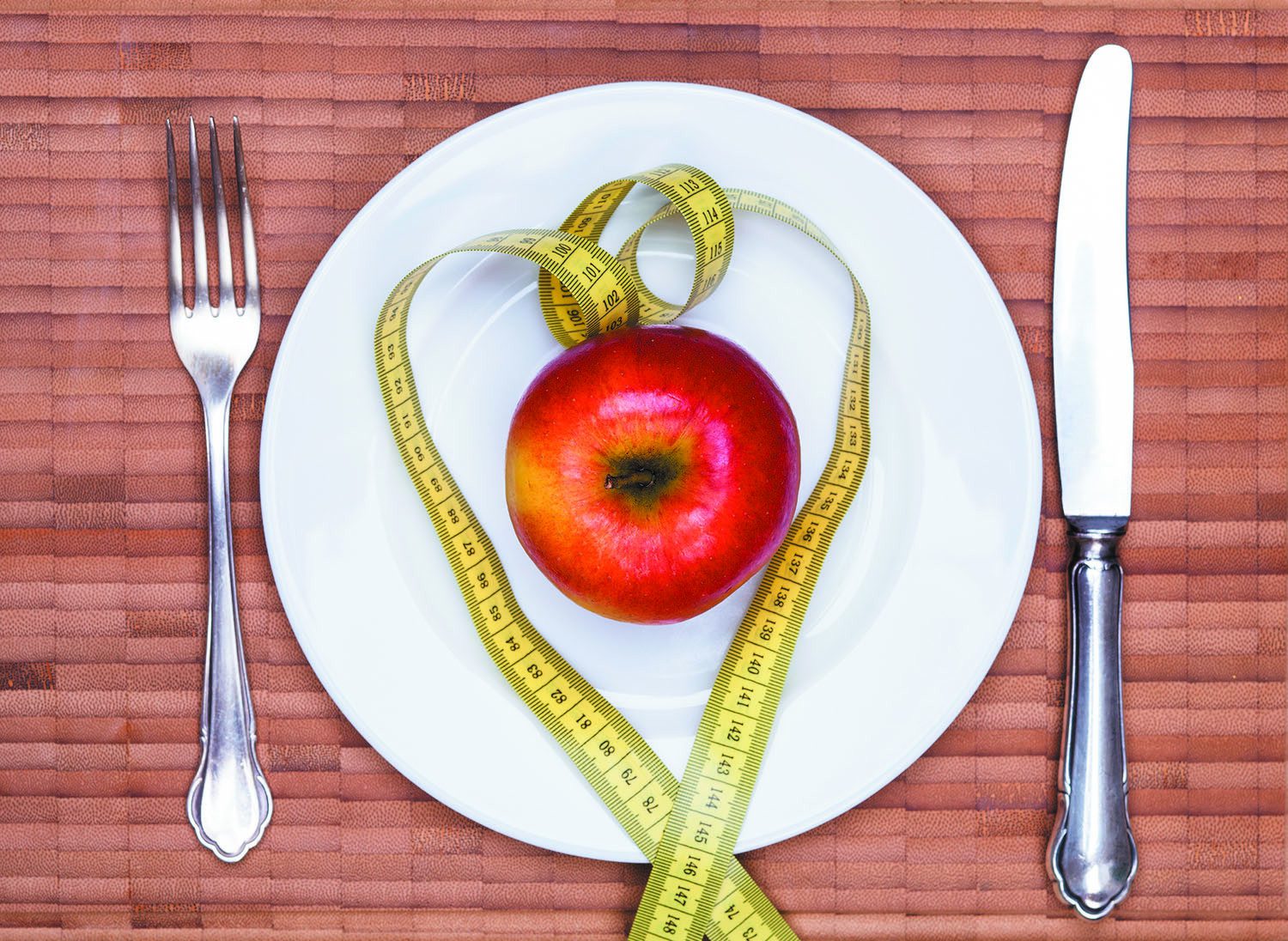Fasting is the practice of not eating or avoiding certain foods for a specified period of time. People have been intermittent fasting for centuries, often for religious reasons. Intermittent fasting, find schedule, and learn benefit of intermittent fasting diet for effective weight loss. Ultimate Guide for Beginners
Intermittent fasting involves periods of entirely or partially abstaining from eating. There are many methods of intermittent fasting that vary in the number of fast days and the calorie allowances.
- In recent years, intermittent fasting has become increasingly popular with people looking to lose weight or improve their health.
- There are various methods of intermittent fasting. Typically, it involves consuming few or no calories for 1–4 days per week, then eating a more regular diet on non-fasting days.
- Some supporters claim that this style of eating is more sustainable than traditional diets.
- In this article, we look at the main methods of intermittent fasting, their possible benefits, and the potential risks
What Is Intermittent Fasting?
Intermittent fasting refers to voluntarily restricting eating hours and/or mealtimes as a way of boosting health. Generally speaking, there are a couple of different methods that people adhere to when intermittent fasting:

1. The 16/8 Method
This method involves eating for 8 hours and fasting for 16. The most common way of scheduling this is by having an open eating window from 12 pm to 8 pm. This means that you’re likely skipping breakfast and taking care to not snack after dinner.
2. Spontaneous Meal Skipping
You’ve probably undergone this form of intermittent fasting at some point in your life. The basic concept is to skip meals whenever convenient with an awareness that your body likely does not need a full 3 meals every day. Being conscious of when you’re actually hungry is always a great place to start, especially for beginner fasters.
3. The 5:2 Method
The 5:2 method or diet consists of regularly eating 5 days out of the week, and for the remaining two eating only 500 calories or so. It’s best to separate your two days of fasting to keep your body adequately nourished.
4. On and Off Fasting
While this method is not recommended for beginners, it poses helpful benefits for experienced fasters. This schedule consists of eating normally one day and then eating very few calories, or not at all the next.
5. OMAD
The OMAD diet consists of fasting largely for 23 hours of the day and eating one large meal during a restricted 1-hour period.
Six ways to do intermittent Fasting
1. Fast for 12 hours a day
- The rules for this diet are simple. A person needs to decide on and adhere to a 12-hour fasting window every day.
- According to some researchers, fasting for 10–16 hours can cause schedule for intermittent fasting Trusted Source the body to turn its fat stores into energy, which releases ketones into the bloodstream. This should encourage weight loss.
- This type of intermittent fasting plan may be a good option for beginners. This is because the fasting window is relatively small, much of the fasting occurs during sleep, and the person can consume the same number of calories each day.
- The easiest way to do the 12-hour fast is to include the period of sleep in the fasting window.
- For example, a person could choose to fast between schedule for intermittent fasting 7 p.m. and 7 a.m. They would need to finish their dinner before 7 p.m. and wait until 7 a.m. to eat breakfast but would be asleep for much of the time in between.

2. Fasting for 16 hours
- Fasting for 16 hours a day, leaving an eating window of 8 hours, is called the 16:8 method or the Leangains diet.
- During the 16:8 diet, males fast for 16 hours each day, and females fast for 14 hours. This type of intermittent fast may be helpful for someone who has already tried the 12-hour fast but did not see any benefits.
- On this fast, people usually finish their evening meal by 8 p.m. and then skip breakfast the next day, not eating again until noon.
- A studyTrusted Source on mice on a high fat diet found that limiting the feeding window to 8 hours protected them from obesity, inflammation, diabetes, and liver disease, even when they ate the same total number of calories as mice that ate whenever they wished.
3. Fasting for 2 days a week
- People following the 5:2 diet eat standard amounts of healthful food for 5 days and reduce calorie intake on the other 2 days.
- During the 2 fasting days, males generally consume 600 calories and females 500 calories.
- Typically, people separate their fasting days in the week. For example, they may fast on a Monday and Thursday and eat regularly on the other days. There should be at least 1 non-fasting day between fasting days.
- There is limited research on the 5:2 diet, which is also known as the Fast diet. A studyTrusted Source involving 107 or found that restricting calories twice weekly and continuous calorie restriction both led to similar loss.
- The study also found that this diet reduced insulin levels and improved insulin sensitivity among participants.
- A small-scale studyTrusted Source looked at the effects of this fasting style. Over the course of one menstrual cycle, the schedule for intermittent fasting women lost 4.8% of their body weight and 8.0% of their total body fat. However, these measurements returned to usual for most of the women after 5 days of typical eating.
4. Alternate day fasting
- There are several variations of the alternate day fasting plan, which involves fasting every other day.
- For some people, alternate day fasting means a complete avoidance of solid foods on fasting days, while other people allow up to 500 calories. On feeding days, people often choose to eat as much as they want.
- One studyTrusted Source reports that alternate day fasting is effective for weight loss and heart health in healthy and high weight adults. The researchers found that the 32 participants lost an average of 5.2 kilograms, or just over 11 pounds, over a 12-week period.
- Alternate day fasting is an extreme form of intermittent fasting, and it may not be suitable for beginners or those with certain medical conditions. It may also be difficult to maintain this type of fasting in the long term.

5. A weekly 24-hour fast
- Fasting completely for 1 or 2 days a week, known as the Eat-Stop-Eat diet, involves eating no food for 24 hours at a time. Many people fast from schedule for intermittent fasting breakfast to breakfast or lunch to lunch.
- People on this diet plan can have water, tea, and other calorie-free drinks during the fasting period.
- People should return to regular eating patterns on non-fasting days. Eating in this manner reduces a person’s total calorie intake but does not limit the specific foods the individual consumes.
- A 24-hour fast can be challenging, and it may cause fatigue, headaches, or irritability. Many people find these effects become less extreme over time as the body adjusts to this new eating pattern.
- People may benefit from trying a 12-hour or 16-hour fast before transitioning to the 24-hour fast.
6. The Warrior Diet
- The Warrior Diet is a relatively extreme form of intermittent fasting.
- The Warrior Diet involves eating very little, usually just a few servings of raw fruit and vegetables, during a 20-hourTrusted Source fasting window, then eating one large meal at night. The eating window is usually only around 4 hours.
- This form of fasting may be best for people who have tried other forms of intermittent fasting already.
- Supporters of the Warrior Diet claim that humans are natural schedule for intermittent fasting nocturnal eaters and that eating at night allows the body to gain nutrients in line with its circadian rhythms.
- During the 4-hour eating phase, people should make sure that they consume plenty of vegetables, proteins, and healthy fats. They should also include some carbohydrates.
- Although it is possible to eat some foods during the fasting period, it can be challenging to stick to strict guidelines on when and what to eat in the long term. Also, some people have trouble eating such a large meal so close to bedtime.
- There is also a risk that people on this diet will not eat enough nutrients, such as fiber. This can increase the risk of cancer and have an adverse effect on digestive and immune health.

Main Methods
Different diet plans vary in how long people should fast and how often they fast.
No system is generally better than any other. However, some people may find that they can maintain the same healthy eating habits or achieve better results on their own.
These options mean that those who want to try intermittent schedule for intermittent fasting can find a plan that works for them.
Alternate day Fasting
Dr. Krista Varady, a professor of nutrition at the University of Illinois at Chicago, created a daily meal based on her research.
As the name suggests, this plan involves alternating “fasting” and “eating” days. The fasting day is one 500 calorie meal during the day. People don’t have to restrict what, when, or how much they eat on vacation. Alternate day fasting plans include not eating at all on other days.
2 days per week fasting.
Developed by Dr. Michael Mosley, the fast diet involves schedule for intermittent fasting 2 days per week. On fasting days, females eat 500 calories, and males eat 600 calories. People maintain their usual eating routines for the remaining 5 days.

Daily intermittent fasting
Daily intermittent fasting restricts eating to a certain number of hours each day. The 16:8 diet is a common method that means fasting for 16 hours per day, leaving an 8-hour window for eating.
The Leangains method is a plan that uses a 16:8 fasting approach alongside other recommendations. People also refer to daily intermittent fasting as time restricted eating.
Why Should I Intermittent Fast?
So, why should you take up intermittent fasting? For starters, fasting is entirely voluntary and is something you should only try out if you feel mentally and physically ready. Although it may not sound the most appealing, intermittent fasting for weight loss is very effective.
According to a Harvard University study, intermittent fasting in 10 weeks usually results in a loss of 7 to 11 pounds. Intermittent fasting can also reduce appetite and build awareness around food. Not to mention, it is one of the few dieting methods that can allow you to maintain more muscle mass while cutting fat. Fasting is a great platform to help you on your long-term fasting journey. Best of all, they offer supplements, fibers, and energy packs to support your fasting routine. They also have apps to track your progress!
How to Eat Healthier
While intermittent fasting is great for many, it’s certainly not for everyone. Here are a couple of general methods to incorporate healthy eating into your diet. It should be noted that intermittent fasting is largely only effective if you’re taking in proper nutrients as described below.
Grazing
Instead of eating three large meals a day, try eating small meals whenever you feel hungry. By doing this, you will likely have consistent energy levels. In addition, you will immediately improve your physical fitness.

Getting Proper Nutrients
It sounds cliché, but getting your fruits and vegetables every day is so important! Try to include more fruits and vegetables in your diet, in different shapes and colors. If you are not getting enough nutritious foods, you need to rethink your diet. If you’re looking for a place to shop, FreshDirect is a great place to buy healthy, organic food! The best part is that they are delivered right to your door.

Staying Clear of Processed Foods
While it’s very difficult to avoid processed foods entirely, opting for more natural alternatives is always a step in the right direction. The closer a food is to its original state, the better.
Reaching Out for Help
Do you find yourself still needing an extra push to launch your new diet? Check out some of these resources for help.
- Helpful Apps: Digital food journals like Noom can help you calculate your precise caloric intake so you can see your progress over time.
- Online Workouts: Intermittent fasting for weight loss is best paired with exercise! Check out handy apps like Yoga Download for a number of great workouts from the comfort of your phone. Gaiam is a great yoga gear place that has it all for beginners!
- Find Your Community: Are you fasting for weight loss? Or looking to build body mass? In either case, find your community through websites like Body Builder.
- Talk to a Professional: When in doubt, talk to your doctor or nutritionist for reassuring advice.
Intermittent fasting can be an excellent way to boost your overall health without too much drastic change to your lifestyle. Enjoy all the benefits that eating slightly less can bring to your life.
Benefits
Many studies, though moderate, Intermittent fasting, find schedule, and learn benefit of intermittent fasting diet for effective weight loss. Ultimate Guide for Beginners has been displayed in the load of fasting, as you earn the 2018 writer of the 2018 authors before doctors benefit intermittent fasting recommend reducing. Proponents of intermittent fasting claim that these benefits are possible on the side of obesity.
Longevity
- A 2016 review found that years of animal studies showed a link between restriction of calories, fewer diseases, and longer life. Scientists have studied the mechanisms behind those benefits and how they translate to humans.
- A 2011 studyTrusted Source linked the hormone insulin-like growth factor-1 (IGF-1) to certain diseases that affect lifespan, such as cancer and type 2 diabetes.
- Authors of a 2014 studyTrusted Source found that eating proteins increases IGF-1 production. Fasting to restrict calories may be a way to decrease IGF-1 levels. This could potentially lower a person’s risk of chronic diseases and extend their lifespan.
Cancer
- A 2014 minireview Trusted Source reported that restricting calories decreases IGF-1 levels, which may result in slower tumor development.
- A 2019 review Trusted Source in people with cancer found that fasting reduced some of the side effects of chemotherapy and increased its effectiveness. The study authors suggested that fasting may deprive cancer cells of nutrients, making them more benefit intermittent fasting susceptible to the toxins in chemotherapy.
- Doctors do not recommend long-term calorie restriction for people with cancer. Calorie restriction can also be challenging to sustain.
- Short-term calorie restriction plans, such as intermittent fasting, may be an option for those who have cancer. However, people with cancer must talk to their doctor and dietitian before starting a fasting diet.
- Appetite suppression can be a side effect of cancer treatment and benefit intermittent fasting excessive weight loss can pose a health risk for people receiving treatment.
Neurological diseases
- Intermittent fasting may also impact cognition.
- According to a 2018 review Trusted Source, animal studies show that restricting calories through intermittent fasting can slow signs of cognitive and motor decline.
- The same review suggests that these fasting methods may also help benefit intermittent fasting the nerves protect themselves against injury.
- While many of these studies have not been in humans, intermittent fasting shows promise as a remedy for some effects of aging. More extensive research is now awaited in human subjects.
Blood sugar
- Some studies have shown that intermittent fasting improves insulin sensitivity more than traditional diets, but other studies have not shown the same advantage.
- Researchers have also reported that intermittent fasting and traditional diets lead to comparable decreases in hemoglobin A1c.
- More research is necessary to confirm the long-term risks and benefits of intermittent fasting. However, it shows a great deal of promise on a short-term basis.
- People with diabetes who take insulin or medication should consult with their benefit intermittent fasting doctor before starting a diet, as they must maintain their blood sugar levels.
- Failure to maintain correct blood sugar can result in low blood sugar. This may lead to a coma or even death.
Is it good for muscle building?
- Most weight loss plans result in some loss of lean body mass. The same 2017 review of studies found that intermittent fasting and traditional diets result in similar amounts of muscle loss. Exercise and adequate protein intake may help preserve lean body mass in people following this intermittent fasting diet plan.
- A 2016 studyTrusted Source on males following a resistance training program found that intermittent fasting resulted in a significant loss of body fat.
- Males following a regular diet did not see a significant change in their body fat levels. Both groups maintained their lean body mass.
Safety and Side Effects
Hunger is the main side effect of intermittent fasting.
You may also feel weak, and your brain may not perform as well as you’re used to.
This may only be temporary, as it can take some time for your body to adapt to the new meal schedule.
If you have a medical condition, benefit intermittent fasting you should consult with your doctor before trying intermittent fasting.
This is particularly important if you:
- Have diabetes.
- Have problems with blood sugar regulation.
- Have low blood pressure.
- Take medications.
- Are underweight.
- Have a history of eating disorders.
- Are a woman who is trying to conceive.
- Are a woman with a history of amenorrhea.
- Are pregnant or breastfeeding.
All that being said, intermittent fasting has an outstanding safety profile. There is nothing dangerous about not eating for a while if you’re healthy and well-nourished overall.
Tips for maintaining intermittent Fasting.
It can be challenging to stick to an intermittent fasting program.
The following tips may help people benefit intermittent fasting stay on track and maximize the benefits of intermittent fasting:
- Staying hydrated. Drink lots of water and calorie-free drinks, such as herbal teas, intermittent fasting diet throughout the day. This can help ensure you get enough electrolytes, sodium, and potassium chloride.
- Avoiding thinking about food. intermittent fasting diet Plan plenty of intermittent fasting to loss weight distractions on fasting days to avoid thinking about food, such as catching up on paperwork or going to see a movie.
- Resting and relaxing. Avoid strenuous activities on fasting days, although light exercise such as yoga may be beneficial.
- Making every calorie count. If the chosen plan allows some calories during fasting periods, select nutrient-dense foods intermittent fasting diet that are rich in protein, fiber, and healthful fats. Examples include beans, lentils, eggs, fish, nuts, avocado, and unprocessed meats.
- Eating high-volume foods. Select filling yet low-calorie foods, which include popcorn, raw vegetables, and fruits with high water content, such as grapes and melon.
- Increasing the taste without the calories. Season meals generously with garlic, herbs, spices, or vinegar. These foods are extremely low in calories yet are full of flavor, which may help to reduce feelings of hunger.
- Choosing nutrient-dense foods after the fasting period. Eating foods that intermittent fasting to loss weight is high in fiber, vitamins, minerals, and other nutrients helps to keep blood sugar levels steady and prevent nutrient deficiencies. A balanced diet will also contribute benefit intermittent fasting to weight loss and overall health. Intermittent fasting, find schedule, and learn benefit of intermittent fasting diet for effective weight loss. Ultimate Guide for Beginners






